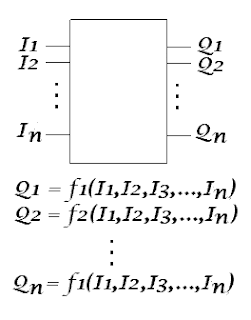All the new products are built using Intel's next-generation 32-nanometer technology, codenamed Westmere, and are based on the Nehalem microarchitecture. The brands are Core i3 for low-end systems, Core i5 for mainstream PCs and Core i7 for the highest end computers used in video editing and playing top-of-the line video games. Intel started shipping 32-nanometer processors this year, but the upcoming products are the first to cover all PC categories.
The Core i7 processors, codenamed Lynnfield for the desktop models and Clarksfield for the laptop versions, are all quad-core processors. The i5 processors are available in quad-core and dual-core models, and the i3 are only dual-core.
All of the dual-core processors have the CPU and graphics processor integrated on a single die, with the memory controller on a separate chip. Previous generations had each of the three components on a separate die. The Core i7 products, which are typically used in systems with a separate graphics card, do not have integrated graphics, which Intel now calls its HD (high-definition) Graphics. Previously, Intel called its graphics technology GMA for graphics media accelerator.
Intel says its latest graphics technology is better than the previous generation because more of the work is done on the hardware versus software. As a result, end users will see smoother, sharper and more colorful playback of Blu-ray video and DVDs. The same is true for picture-in-picture playback, according to Intel.
In addition, Intel graphics support multiple monitors and DisplayPort and Dual HDMI interfaces. The former is used to connect to monitors and home-theater systems and the latter to audio/video devices, such as Blu-ray disc players, set-top boxes and video-game consoles.
The Core i5 and i7 products will all have Intel's Turbo-Boost technology, which ratchets up processing power to meet workload bursts and then lowers it when extra horsepower is no longer needed. The technology also has what Intel calls "power-gating," which will leave idle all cores that aren't needed to accomplish particular tasks. Turbo-Boost technology in general makes processors more efficient in terms of energy use.
Intel plans to release pricing and further details on the new products at CES, which runs from Jan. 7-10 in Las Vegas, Nev.
Intel unveiled its new line the same day researcher IDC released an upbeat report on the PC market. The analyst firm said the overall market in terms of shipments returned to year-over-year growth in the third quarter after three consecutive quarters of decline. Starting next year, IDC says shipments will increase in the low double-digits through 2013.
While facing a brighter outlook for the PC industry, Intel is looking at dark clouds on the legal front. The chipmaker is dealing with increasing pressure from government agencies in and outside the U.S. that accuse the company of anti-competitive behavior. Intel's latest legal headache came this week from the Federal Trade Commission, which used the company, claiming it uses its dominance to stifle competition.



















